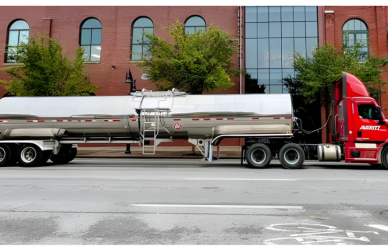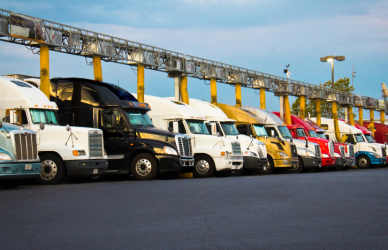As you start on your journey behind the wheel, you may find yourself considering the option of team driving. Teaming up with a partner can offer both advantages and challenges, shaping your experience on the road in unique and possibly exciting ways. Here are some of the pros and cons of team driving to see if this type of driving would be a good fit for you.
Pros:
- Increased Efficiency: One of the primary benefits of team driving is the ability to keep the wheels turning around the clock. With two drivers alternating shifts, you can cover more miles in less time, leading to faster deliveries and improved productivity. This enhanced efficiency is especially valuable for time-sensitive loads and long-haul routes.
- Shared Responsibilities: Team driving allows you to divide and conquer the tasks associated with life on the road. From navigating routes and managing paperwork to conducting vehicle inspections and handling customer interactions, having a partner by your side means you can share the workload and support each other along the way.
- Improved Safety: Two heads are better than one, especially when it comes to staying safe on the road. With a co-driver to share the driving duties, you can minimize fatigue and reduce the risk of accidents caused by drowsy driving. Additionally, having a partner onboard provides an extra set of eyes and ears, enhancing overall awareness and vigilance.
- Social Interaction: Truck driving can be a solitary profession, but team driving offers the opportunity for social interaction and companionship on the road. This is especially true if you team up with a spouse, family member, or friend. Whether you’re swapping stories during rest breaks, sharing meals together, or simply enjoying each other’s company during long stretches of driving, having a teammate can make the journey more enjoyable and fulfilling.
Cons:
- Limited Personal Space: Sharing a confined space with a co-driver for extended periods can be challenging, especially if you have different habits or preferences or if you don’t have a close relationship with them. From sleeping arrangements to cabin temperature settings, maintaining harmony and respecting each other’s boundaries requires effective communication and compromise.
- Scheduling Conflicts: Coordinating schedules and managing rest breaks can be tricky when you’re team driving. Differences in sleep patterns, meal times, and personal routines may lead to conflicts or disagreements, even if you know them well. Establishing clear expectations and establishing a good rhythm for both people is essential for a successful partnership on the road.
- Compatibility Issues: Not all driving partnerships are created equal, and finding the right co-driver can be a hit-or-miss endeavor. Differences in driving styles, communication styles, and personality traits can create tension and friction within the team if not properly managed. Building mutual trust, respect, and understanding is crucial for fostering a positive and productive working relationship.
- Financial Considerations: While team driving can increase earning potential through faster deliveries and higher mileage, it also entails sharing profits with your co-driver. Dividing expenses such as fuel, meals, and lodging may impact your overall income, so it’s essential to carefully weigh the financial implications of team driving before committing to a partnership.
Team driving offers a mix of benefits and challenges that can significantly influence your experience on the road. Whether you thrive in a collaborative environment or prefer the solitude of solo driving, it’s important to consider your personal preferences, communication skills, and compatibility with potential co-drivers when deciding whether team driving is the right choice for you!











